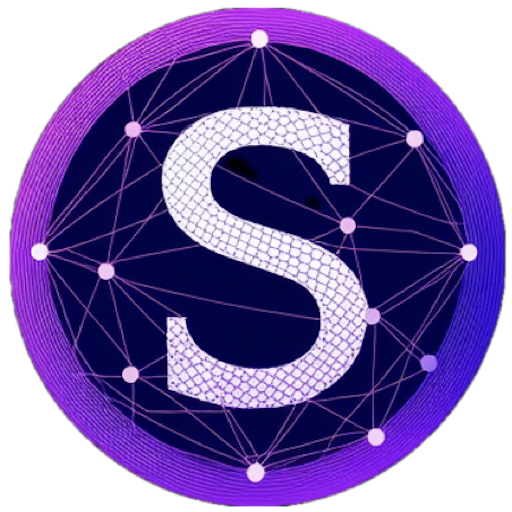I’m a big fan of cryptocurrencies and blockchain technology. Even though I’d heard about Bitcoin in the early days, I didn’t appreciate or understand the implications of the technology and what it will mean for business in the next two decades. In early 2017, a friend reintroduced me to crypto, and since then I’ve been hooked on the possibilities.
In my day job, I’m a technology strategist. I evaluate new tech and work with senior leaders and executives to integrate, deploy and support new products and services. Over the last 5-6 years, I can honestly say I’ve been relatively successful at picking winning solutions.
For example, I was an early adopter of the Nutanix HCI platform and worked tirelessly to implement the product in my workplace of the day. Our deployment was mostly successful, sure, there were some teething issues, but overall things were smooth and delivered business benefits. Since then the on-premises storage and computing market has exploded with HCI solutions. Major vendors such as HPE, Dell, Cisco and Lenovo all have all moved with the market to deliver HCI products to the masses.
In early 2015 I started investigating and deploying SDWAN technologies. For those who don’t know, SDWAN is a software-defined solution that helps a network engineer control their traffic flows between data centres, branch offices and the cloud using any carriage. SDWAN solutions are designed with smarts, enabling the user to buy Internet bandwidth and run their WAN networks across the public Internet without the hassle of manual and time consuming configuration. SDWAN helps to break the stranglehold of the MPLS carrier on the enterprise. There are now several choices available to the network architect, and if you understand the business requirement, you can engineer a suitable cost-effective solution that provides more bandwidth at a significantly reduced cost. SDWAN is becoming the default WAN solution, most customers now demand these features when assessing solutions, and it’s reshaping the industry.
That brings me back around to cryptocurrencies and blockchain. I believe the technology has the traits and characteristics of a truly transformational technology which will change how we build applications and as a result, will dramatically improve and simplify infrastructure delivery.
So what are these properties? What makes blockchain and crypto transformational for the infrastructure layer? Why do I think it will be useful for the enterprise? I’ll briefly cover some topics here, by no means is the list exhaustive, and in future posts, I plan to expand into the detail.
Hybrid IT
For years the vision of enterprise IT has been the hybrid cloud. Take a look around the industry and count the vendors building a hybrid solution. For anyone in Infrastructure, the thought of choosing the appropriate location for your workload based on characteristics such as cost, performance, resilience etc. has been a long standing goal. Unfortunately, it hasn’t materialised! I believe blockchain with Inter Blockchain Communication (IBC) will one day solve this challenge. As an example, imagine the option to hold public user information on an open chain (usernames, DOB, keys etc.), but interact with private data on a closed chain running in your enterprise network. We may finally see true hybrid IT in action! Picture your business interacting with existing users on a blockchain; you don’t control their accounts, key or information; you use it with their permission, lowering your overall risk and exposure to hacking and data loss.
Standardised Infrastructure
New Blockchains like EOSIO run on standards x86 servers and use consensus protocols that don’t require traditional mining. In my opinion, this is fabulous for the enterprise, as most enterprises desire a simplified infrastructure, and are not prepared to increase costs through the purchase of specialised ASCIs or GPU mining products. Enterprise wants standard building blocks on which to build and deploy applications. Using building blocks addresses data centre complexity and decreased the management overhead. Software such as EOSIO can run anywhere, on-prem using bare metal, cloud, or on a platform as a service solution and is deployed using modern tools and automation. There is much more to discuss in this space, including why I think using a decentralised blockchain is a winner over central databases, but let’s save that topic for another day.
Retiring the Password
Blockchains uses public/private key pairs and cryptography to trust and authenticate users. Coupling blockchain with the secure storage of keys and access via biometrics or technology like Apple’s FaceID will change how enterprise users connect to their business environments. Anyone in tech knows the perils of password management and security threats that relate to weak user passwords or mismanaged passwords. I’m looking forward to the day when the password is obsolete.
Rethinking the Database
Enterprise and business spend substantial amounts of hard earned cash on database systems and vendor support every year! It’s the cost of doing business, right? What if you could redirect that money into a standard application delivery platform that provides distributed storage for your most essential data on a pay for use model? Use the benefits of the open source community to help you achieve your business goals while contributing back to the community. It’s possible in the blockchain and open source community, and in the future, I’ll expand on some of the possibilities.
Network Security
I believe blockchain has the potential to help enterprise and business eliminate the highly centralised network security model. If you’ve worked for any reasonably sized company, you would no doubt have waited anywhere from days to weeks, maybe even months to get a firewall rule to allow someone to connect to your service. Moving to a system that natively builds in security and trust, moves the security to where it should be, in the application. Doing away with passwords as discussed above helps us move the security perimeter from the edge firewall to the edge application. I’m excited about the possibilities here and is something I will cover in future posts.
Decentralising the Internet
There is lots of debate around just how centralised the Internet has become (check out the great article on Medium by @vincetabora). As a long-term goal for blockchain, many believe it will help to redistribute traffic away from the facebook, amazon and googles of the world. Being a fan of blockchain and crypto I hope it will help us here, but I can’t see this change taking place quickly.
Wrap Up
If you got this deep into my post, thanks for reading! I guess some may find it strange an IT guy with an Infrastructure background is writing and singing the praises of blockchain and crypto. After observing the problems for so long, I fundamentally believe this technology will help transform enterprise infrastructure, no matter where it lives, on-premises or cloud.
Until next time!



